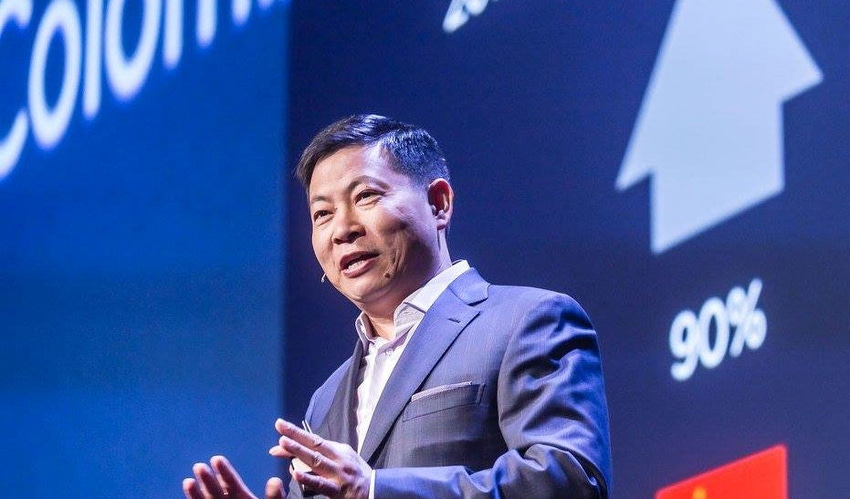Chinese telecoms giant Huawei looked to build on a strong year for its consumer business with a strong statement of intent at the first big tech show of the year.
January 6, 2016

Chinese telecoms giant Huawei looked to build on a strong year for its consumer business with a strong statement of intent at the first big tech show of the year.
With its networking business effectively sidelined in the US due to national security concerns Huawei can focus all its energies on consumer products in that market and Richard Yu, the CEO of its consumer business group (pictured), opened his CES presentation with an Apple-style recap on how well it has done in the past year.
Smartphone shipments, we were told, increased by 44% annually to 108 million units in 2015, cementing Huawei’s third position in the market with around a 10% global share. Meanwhile total revenue for the consumer group jumped by 70% to over $20 billion and various brand metrics – something Huawei has prioritised for some time – all seem to be heading in the right direction.
Moving onto the launches we got the global launch of the Huawei Mate 8 – its latest phablet. The USPs for the 6-inch smartphone remain the same as they have for some time, with Huawei pointing to superior battery life enabled by the company’s wireless engineering expertise. The Mate 8 has been available in China for a couple of months and will initially be rolled out to 30 more countries, but not the US or UK, starting at €599.
One the wearables side the focus was more on fashion than tech, with a Swarovski partnership yielding some rather blingy variations on last year’s smart watch launches, which will cost upwards of $499.
Huawei concluded with a look back at the Nexus 6P, which marked the first time Google had embraced Huawei to the Nexus bosom as a smartphone OEM. Apparently that all went really well and Huawei is celebrating by launching a new-coloured case variety.
There definitely seems to be positive momentum for Huawei in the consumer market, but maintaining that is another matter entirely. It has probably grabbed most of the low-hanging fruit in developing markets and from Samsung’s down year and now needs to demonstrate real innovation to continue to steal share, principally from Android competitors.
About the Author(s)
You May Also Like








.png?width=300&auto=webp&quality=80&disable=upscale)


_1.jpg?width=300&auto=webp&quality=80&disable=upscale)


.png?width=800&auto=webp&quality=80&disable=upscale)